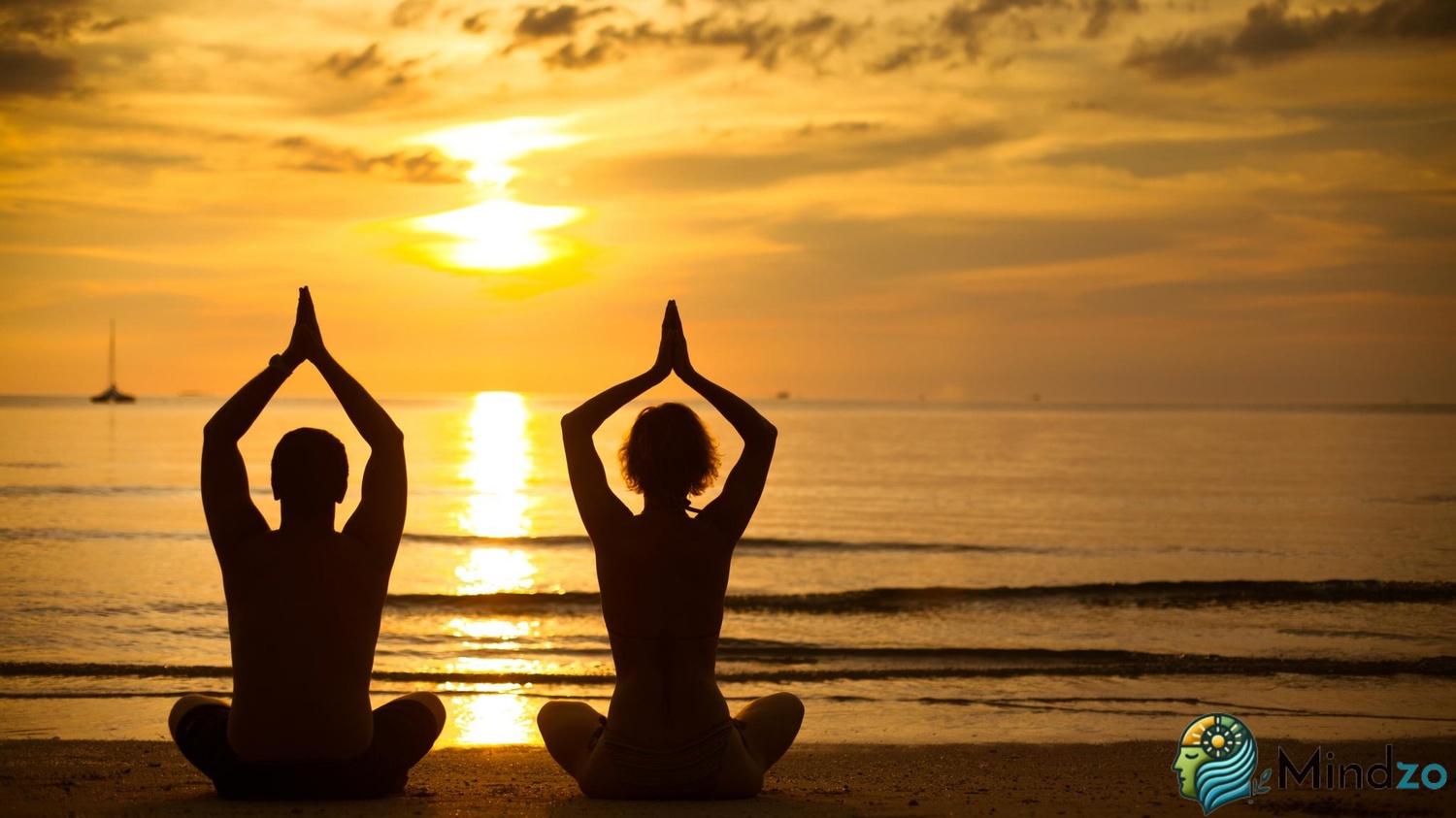Yoga for Bipolar Wellness: Balancing Mood Swings

Living with bipolar disorder means navigating intense mood swings that can range from the soaring highs of mania to the crushing lows of depression. While medication and therapy remain the cornerstone of treatment, emerging research suggests that yoga – the ancient practice connecting mind, body, and breath – may offer valuable support for effectively managing bipolar symptoms to improve and enrich overall quality of life.
Bipolar disorder is a chronic mood condition characterized by extreme shifts in mood, energy levels, and behavior. These episodes can disrupt relationships, careers, and daily functioning, making effective management strategies essential. As researchers explore complementary approaches to traditional treatment, yoga has emerged as a promising tool that addresses the mind-body connection at the heart of mood regulation.
Understanding Bipolar Disorder and the Role of Complementary Practices
Bipolar disorder affects approximately 2.8% of adults. The condition involves distinct episodes of mania or hypomania (elevated mood and energy) and depression (low mood and energy), with periods of relative stability in between. Effective management typically requires mood-stabilizing medications, psychotherapy, and lifestyle modifications.
The challenge with bipolar disorder lies in its complexity – each person’s experience is unique, and what helps during depressive episodes may not be appropriate during manic phases. This is where the mindful, adaptable nature of yoga becomes particularly relevant. Unlike one-size-fits-all approaches, yoga can be modified to meet your current state while building overall resilience.
Research on yoga for bipolar disorder is still emerging, but initial findings are encouraging. Studies have shown that yoga might relieve some symptoms of bipolar disorder and depression, though researchers emphasize the need for more extensive research. Importantly, surveys of individuals with bipolar disorder who practice yoga reveal that many believe it has a major positive impact on their lives, particularly in managing both depressive and manic symptoms.
The Science Behind Yoga and Mood Stabilization
How might yoga help with bipolar wellness? The answer lies in its multifaceted approach to nervous system regulation, stress management, and self-awareness.
Autonomic Nervous System Balance: Bipolar disorder often involves dysregulation of the autonomic nervous system – the part of your nervous system that controls automatic functions like heart rate, breathing, and stress response. Yoga’s combination of physical postures, controlled breathing, and meditation can help balance the sympathetic (activating) and parasympathetic (calming) branches of this system, potentially smoothing out some of the extreme fluctuations characteristic of the disorder.
Stress Hormone Regulation: Stress is a major trigger for both manic and depressive episodes. Research shows that regular yoga practice helps regulate cortisol, the body’s primary stress hormone, and may improve overall stress resilience. This doesn’t mean yoga prevents all episodes, but it may help reduce their frequency or intensity.
Body Awareness and Early Detection: One of yoga’s most valuable contributions to bipolar management may be enhanced interoceptive awareness – your ability to sense what’s happening inside your body. This heightened awareness can help you detect early warning signs of mood shifts, allowing for earlier intervention before full-blown episodes develop.
Sleep Regulation: Sleep disturbances are both a trigger and a symptom of bipolar episodes. Yoga, particularly gentle evening practices and yoga nidra (yogic sleep), can improve sleep quality and help maintain the consistent sleep patterns that are crucial for mood stability.
Important Considerations and Potential Risks
Before diving into specific practices, it’s crucial to address an important finding from research: while many people with bipolar disorder report benefits from yoga, studies have shown that yoga is associated with both benefits and risks for the treatment of bipolar disorder.
Some individuals report that certain intense yoga practices – particularly vigorous flowing sequences, heating pranayama (breathing exercises), or highly energizing practices – can potentially trigger hypomanic or manic symptoms. This doesn’t mean yoga is off-limits, it means that mindful selection and modification of practices is essential.
Key Safety Guidelines:
- Always maintain your prescribed treatment plan: Yoga should complement, never replace, mood stabilizers and other medications prescribed by your healthcare provider.
- Work with knowledgeable instructors: Inform yoga teachers about your condition so they can help you modify practices appropriately.
- Monitor your response: Pay attention to how different practices affect your mood and energy. What feels grounding one day might feel overstimulating another.
- Avoid overstimulation during vulnerable periods: During early signs of hypomania or mania, skip vigorous practices and focus on gentle, grounding approaches.
- Prioritize consistency over intensity: Regular gentle practice is generally safer and more beneficial than occasional intense sessions.
The Mood-State Responsive Approach
Unlike general yoga practice, managing bipolar disorder requires a highly responsive, adaptive approach. Think of your yoga practice as having different “gears” that you shift between based on your current mood state – similar to how you’d adjust driving speed based on road conditions.
Understanding Your Energy Temperature
The key to practicing yoga safely with bipolar disorder is learning to read your internal “energy temperature” and adjusting your practice accordingly. This requires honest self-assessment before each practice:
Energy Temperature Check:
- Are you feeling sluggish, heavy, and low-energy? (Depressive state)
- Are you feeling revved up, restless, and high-energy? (Elevated state)
- Are you feeling balanced and neutral? (Stable state)
- Are you noticing early warning signs of a shift in either direction?
Your answers determine not just which poses to practice, but the entire quality of your practice – pace, breath ratio, duration, and intensity.
Strategic Movement Patterns for Different Mood States
Rather than listing individual poses, let’s explore movement strategies and patterns that respond to your current mood state.
The “Gentle Lift” Strategy for Low Mood States
When you’re in a depressive episode, the goal is creating uplift without depleting already-low energy reserves. This requires a completely different approach than standard yoga classes.
Movement Quality: Think “gradual awakening” rather than “vigorous exercise.” Your movements should feel like slowly warming cold hands by a fire – gentle, patient, and respectful of your current limitations.
Postural Strategy: Work with shapes that physically open the front body while keeping your foundation stable. Imagine your chest as a book that’s been closed – you’re gently opening the cover, not forcing it wide open. This might mean staying low to the ground initially (prone backbends) before progressing to standing postures as energy builds.
Pace and Transitions: Move at about 30-50% of “normal” yoga class speed. Hold positions long enough to feel supported and stable – typically 5-8 breaths – giving your nervous system time to register that it’s safe to generate more energy.
Practice Duration: Start with just 10-15 minutes. During depression, completing a short practice successfully is more valuable than attempting and abandoning a longer one.
The “Cool Down” Strategy for Elevated States
During hypomania or mania, your yoga practice becomes a tool for gentle deceleration – like slowly bringing a speeding car to a safe stop rather than slamming the brakes.
Movement Quality: Think “settling” and “rooting” rather than “stretching” or “strengthening.” Every movement should feel like you’re landing more deeply into your body, connecting with weight and gravity.
Postural Strategy: Emphasize positions where you fold inward, come low to the ground, or invert gently. Your body should feel contained and supported, not expansive or exposed. Focus on shapes that create a sense of being held – by the floor, by props, by gravity itself.
Pace and Transitions: Move even slower than you think you need to – perhaps 20-30% of typical class speed. The slow pace itself becomes therapeutic, training your nervous system to downregulate. Hold restorative positions for extended periods (10-20 minutes), allowing deep settling to occur.
Practice Duration: Paradoxically, you might practice longer during elevated states – 30-45 minutes – because the goal is extended deceleration. However, this is restorative time, not active exercise time.
The “Equilibrium” Strategy
When you’re in a stable mood state, your practice focuses on building resilience and developing the body awareness that helps you detect early mood shifts.
Movement Quality: Balanced and rhythmic, like a steady heartbeat. You’re working with moderate effort – not pushing to your edge, but not staying in your comfort zone either.
Postural Strategy: Include both energizing and calming elements in each practice session. This trains your nervous system to move skillfully between activation and relaxation.
Pace and Transitions: Find a sustainable, medium pace – one you could theoretically maintain indefinitely. This middle path teaches your system about balance and moderation.
Practice Duration: Aim for 20-30 minutes of consistent daily practice. The routine itself becomes mood-stabilizing.
Breath Patterns as Mood Regulators
Breathing practices might be even more important than physical postures for bipolar wellness. Your breath is your most immediate tool for nervous system regulation, and unlike poses, you can use breath techniques anywhere, anytime.
The Breath Ratio Strategy
The ratio between your inhalation and exhalation determines whether your practice energizes or calms you. This is crucial knowledge for bipolar management.
For Low Energy States:
- Equal breathing (1:1 ratio): Inhale for 4 counts, exhale for 4 counts. This creates balance and gently builds energy without overstimulation.
- Slightly longer inhale (5:4 ratio): Inhale for 5 counts, exhale for 4 counts. This subtly activates your system.
For Elevated States:
- Extended exhalation (1:2 ratio): Inhale for 4 counts, exhale for 8 counts. This strongly activates your relaxation response.
- Progressive exhalation: Start with equal breathing, then gradually lengthen only the exhale over several minutes.
For Stable States:
- Balanced ratios (1:1 or 1:1.5): Maintains equilibrium while building breath capacity and awareness.
The Temperature-Based Breath Technique
Different breathing techniques create different energetic temperatures in your body – a critical consideration for mood management.
Cooling Breaths for Elevated States: Sitali (tongue-curled breathing) or Sitkari (teeth-breathing) literally lower your body temperature while calming an overactive nervous system. Practice for 5-10 minutes when you notice early signs of hypomania.
Warming Breaths for Low Energy (Use with Extreme Caution): Kapalabhati (skull-shining breath) or Bhastrika (bellows breath) generate heat and energy. However, these carry risk for people with bipolar disorder and should only be practiced during clear depressive states, never when stable or elevated. Start with just 20-30 seconds and monitor your response carefully over several hours.
Balancing Breaths for All States: Nadi Shodhana (alternate nostril breathing) balances the left and right hemispheres of your brain without strongly activating or sedating. This is your “safe” breath practice that you can use in any mood state for 5-15 minutes.
Building Your Mood-State Library
Rather than having one yoga routine, create a personal library of practices specifically designed for different mood states. This is your responsive toolkit for bipolar wellness.
Your Depression Response Practice (15-20 minutes)
- Start supine with gentle awareness (2 minutes)
- Prone gentle backbends, progressing gradually upward (5 minutes)
- Transition to standing with supported postures (5 minutes)
- Brief balanced breathing or slightly longer inhales (3 minutes)
- Short rest acknowledging any shifts in energy (5 minutes)
Your Elevation Response Practice (30-45 minutes)
- Restorative opening with props, long holds (15 minutes)
- Gentle forward folds and contained shapes (10 minutes)
- Extended exhalation breathing (10 minutes)
- Yoga nidra or body scan (10 minutes)
Your Stability Practice (25 minutes)
- Centering with balanced breath (5 minutes)
- Flowing sequence with variety (15 minutes)
- Integration and rest (5 minutes)
Your Early Warning Practice (10 minutes)
When you notice early signs of a mood shift but aren’t sure which direction:
- Body scan to identify sensations (3 minutes)
- Gentle seated movements to assess energy (2 minutes)
- Breathing practices matched to what you discovered (5 minutes)
The Daily Mood-Body Awareness Practice
Perhaps more important than any physical practice is developing the skill of reading your body’s signals – your personal early warning system for mood shifts.
The Three-Minute Morning Check-In: Before getting out of bed, lie still and scan:
- Heart rate: Fast, slow, or moderate?
- Breathing: Rapid and shallow, slow and deep, or balanced?
- Body temperature: Feeling hot, cold, or neutral?
- Energy sensation: Depleted, revved up, or moderate?
- Thought speed: Racing, sluggish, or steady?
These body-based observations often detect mood shifts before psychological symptoms appear, giving you earlier intervention opportunities.
Translating Body Signals into Practice Choices:
- Fast heart rate + racing thoughts + heat = Choose cooling, grounding practice
- Slow, heavy, cold sensations = Choose gentle lifting practice
- Moderate, balanced sensations = Choose equilibrium practice
- Mixed or unclear signals = Choose body scan and gentle assessment practice
Yoga Nidra: Your Nervous System Reset
Yoga nidra – often called “yogic sleep” – deserves special mention for bipolar wellness. This guided meditation practice induces deep relaxation while maintaining awareness, and it’s safe and beneficial in virtually any mood state.
Why Yoga Nidra Works for Bipolar Disorder: Unlike active practices that might overstimulate or under-engage depending on your mood state, yoga nidra works with whatever state you’re in. It’s practiced lying down, requires no physical ability, and systematically guides your nervous system into deep rest.
Research suggests yoga nidra helps with anxiety, depression, and sleep disturbances – all common challenges in bipolar disorder. A 30-45 minute yoga nidra session can provide rest equivalent to several hours of sleep.
Integrating Yoga Nidra: Practice yoga nidra 3-5 times weekly, ideally at the same time each day to support routine. Use it as:
- A standalone practice during elevated states when active yoga feels risky
- The closing for any physical practice
- A midday reset when you notice early mood shift signs
- A sleep aid when insomnia threatens your stability
When to Seek Additional Support
Yoga is a valuable tool for bipolar wellness, but it’s one component of comprehensive treatment. Research indicates that 90% of individuals with bipolar disorder who practiced yoga reported that they believed yoga improves their symptoms of depression and mania, suggesting significant subjective benefits. However, these self-reported improvements don’t replace medical treatment.
Always consult your healthcare provider before beginning a yoga practice, especially if you’re experiencing significant mood symptoms. Seek immediate professional help if you experience:
- Suicidal thoughts or behaviors
- Severe manic symptoms
- Inability to function in daily life
- Symptoms that worsen despite self-care efforts
Many mental health professionals now integrate yoga and mindfulness into treatment plans, recognizing the value of combining approaches.
Responsive Self-Care
Living with bipolar disorder requires ongoing attention, adaptation, and self-care. Yoga offers a practical, accessible tool that supports the mind-body connection essential for mood regulation. The key is developing a responsive, adaptive practice that shifts intelligently based on your current state rather than following rigid routines.
Think of your yoga practice as developing fluency in your body’s language – learning to read subtle signals, respond appropriately, and build resilience through mindful engagement. This isn’t about achieving perfect poses or adhering to an idealized practice. It’s about developing the awareness and skills to navigate your unique nervous system with increasing wisdom and skill.
Your journey with yoga and bipolar wellness is uniquely yours. By listening to your body, working with knowledgeable support, and maintaining the treatment approaches that work for you, yoga can become a valuable ally in managing this complex condition. The mat becomes a laboratory for learning about yourself – your patterns, your triggers, your strengths – and that self-knowledge becomes one of your most powerful tools for wellness.
Resources:
- https://www.nih.gov
- https://www.ncbi.nlm.nih.gov/pmc/
- https://www.mayoclinic.org
- https://my.clevelandclinic.org
- https://www.nami.org
- https://www.mind.org.uk
-
 Beyond Words: The Emotional Medicine of a Simple HugOctober 27, 2025
Beyond Words: The Emotional Medicine of a Simple HugOctober 27, 2025 -
 Music’s Unique Therapeutic BenefitsOctober 23, 2025
Music’s Unique Therapeutic BenefitsOctober 23, 2025

Leave a Reply